Have you noticed a greying of your carpet around the EDGES of your room? Does your carpet show dark lines along the baseboards? Do you see grey lines under doors? at the joints on your stairs? If you answered yes to any of these questions, your home is likely suffering from filtration soil.
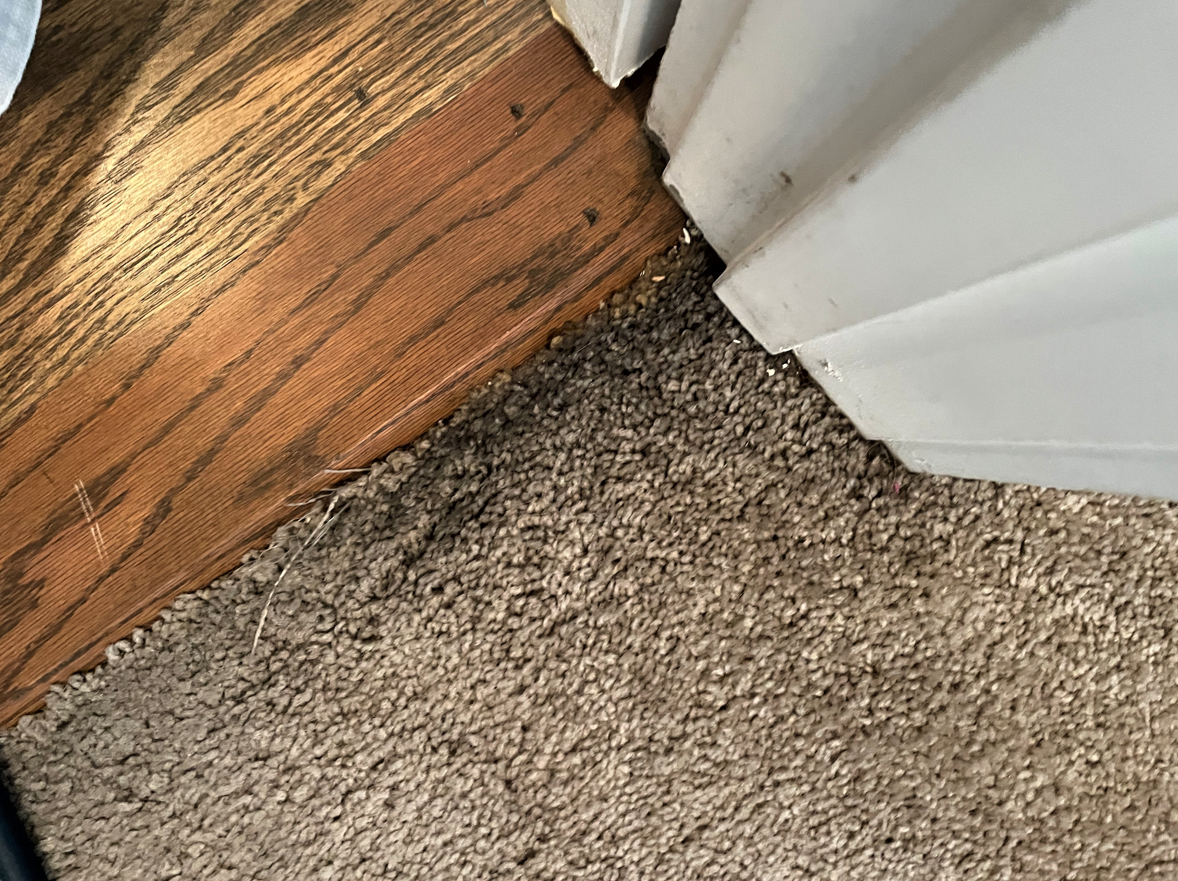
What is Filtration Soiling?
Filtration Soiling is a condition that affects residential and commercial carpet. It occurs when air flows into an area or room at a faster rate than it can escape from that room. In homes and apartments, air coming from an HVAC system pressurizes the old air in a room. That old air then flows over and through carpet fibers.
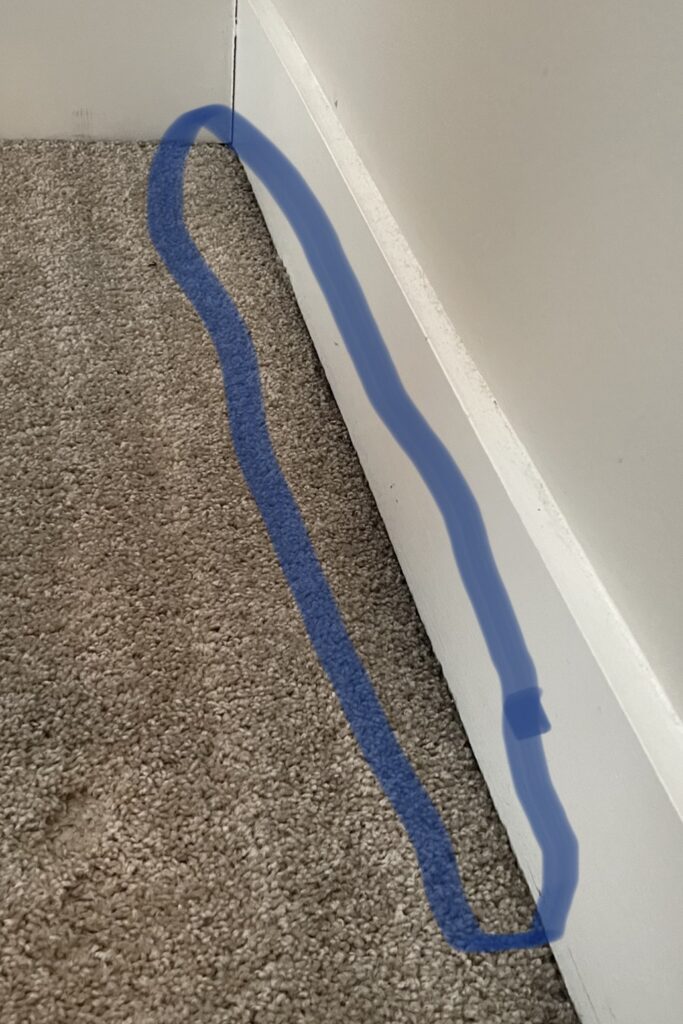
Air may escape through the gap between the carpet’s edge and your baseboards. Or it might travel through the space between the floor and the bottom of a closed door. Take time to understand the patterns of air movement in your home. Then you can locate the areas of your carpet that are most vulnerable to filtration soil.
But the issue is not air alone. As that air travels through your home, it picks up and carries microscopic particles of soil and contamination. Common sources of soil include dust, dirt, dander, fireplace ash, cooking oils and smoke from candles or cigarettes. When that dirty air is forced through the crevices and gaps in a home, it also passes through the carpet pile. The pile then filters out and holds on to these pollutants.
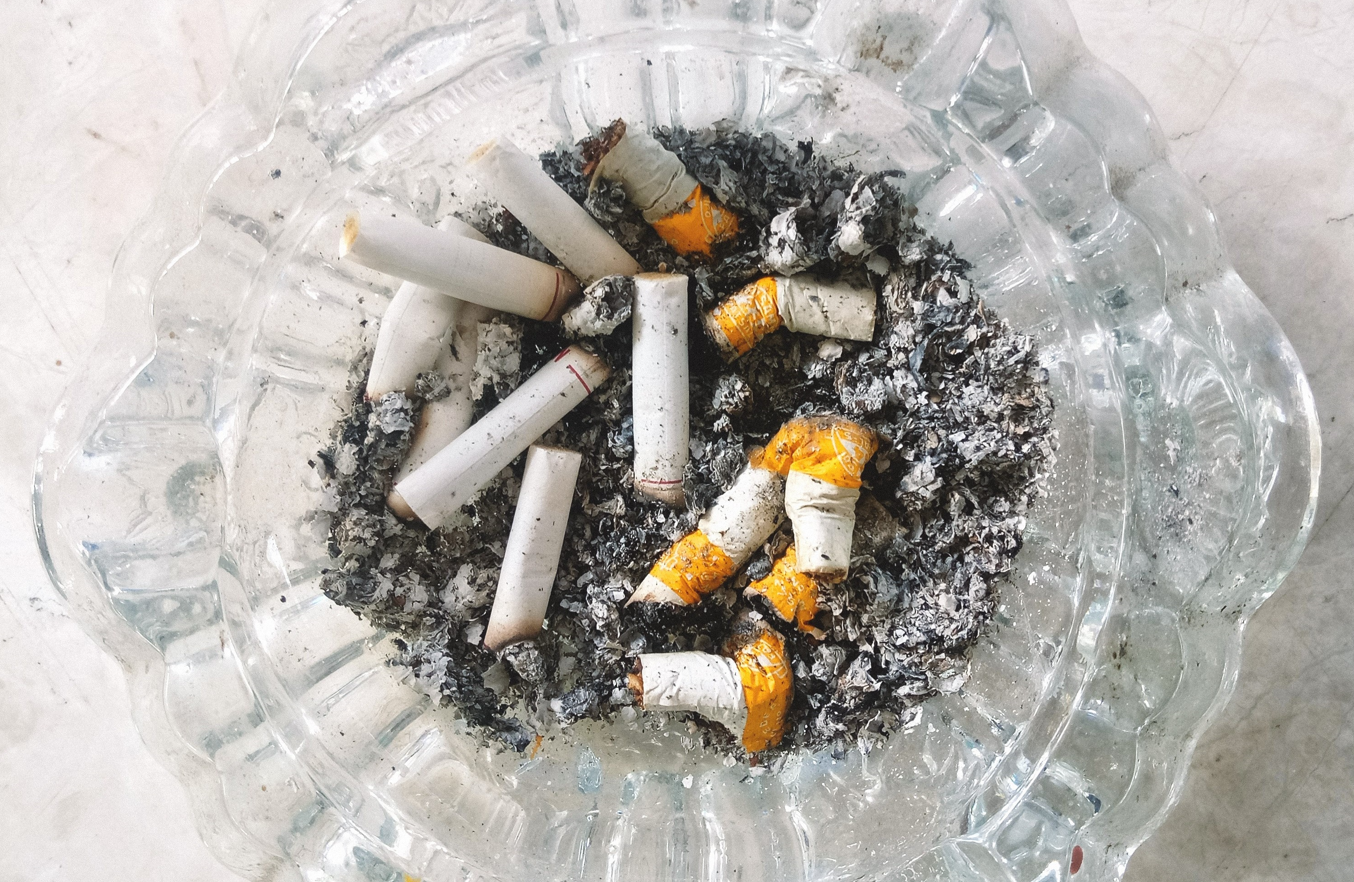
Think about that little filter inside a cigarette. As air is pulled through the cigarette, it leaves tiny particles of ash behind in the filter. Now imagine using the same filter over and over, cigarette after cigarette. That is what happens with carpet. After months and years of filtering polluted air, the carpet retains a residue of microscopic soil particles. The more the pollution, the more the dust, or “filtration soil,” becomes visible.
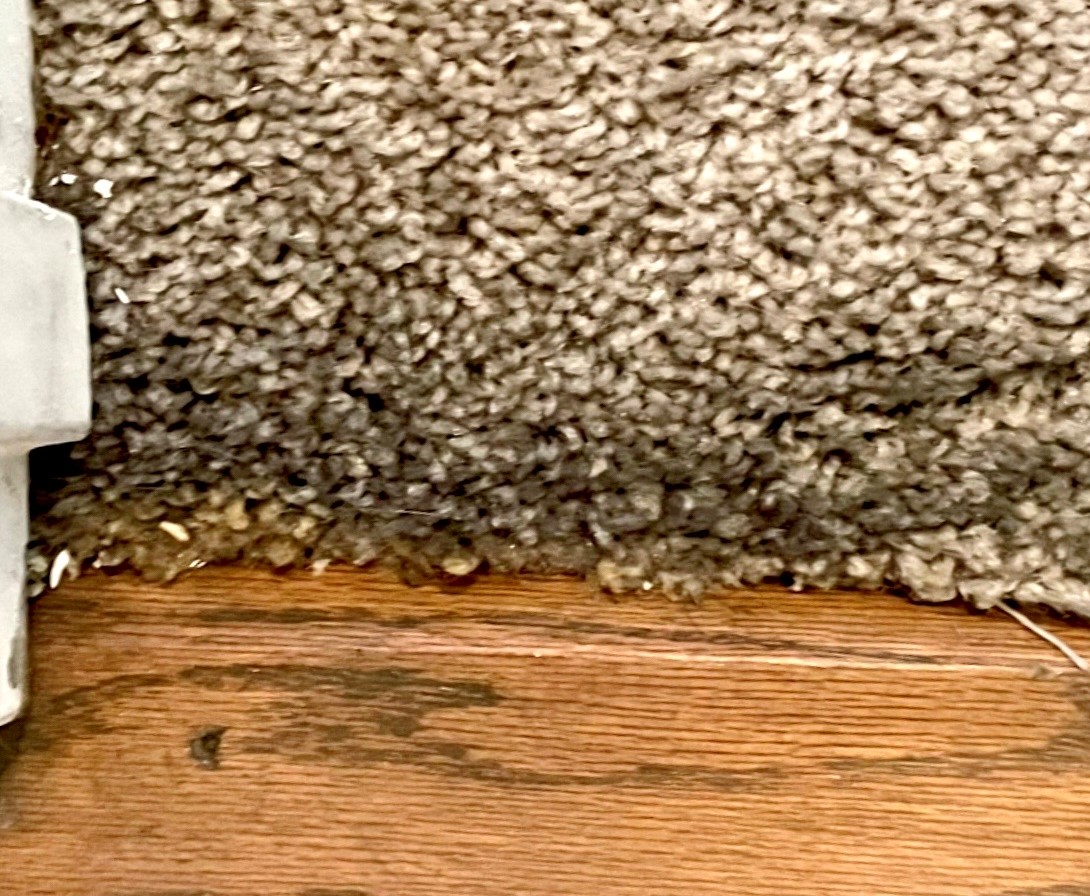
If your carpet shows signs of filtration soiling, please understand this is not an indication of poor vacumming habits. This problem is not one of a home’s cleanliness so much as air quality. Filtration soil is difficult to remove because the soil particles are so fine that they penetrate deep into the carpet pile, sometimes into the backing of the carpet. They are also electrically charged and have an oily consistency. This means the debris bonds to and stains carpet fibers. Not surprisingly, those tell-tale black patches can be very difficult and expensive to remove.
Prevention is key –
To prevent a return of filtration soiling after your professional cleaning, keep an eye on the ‘problem areas.’
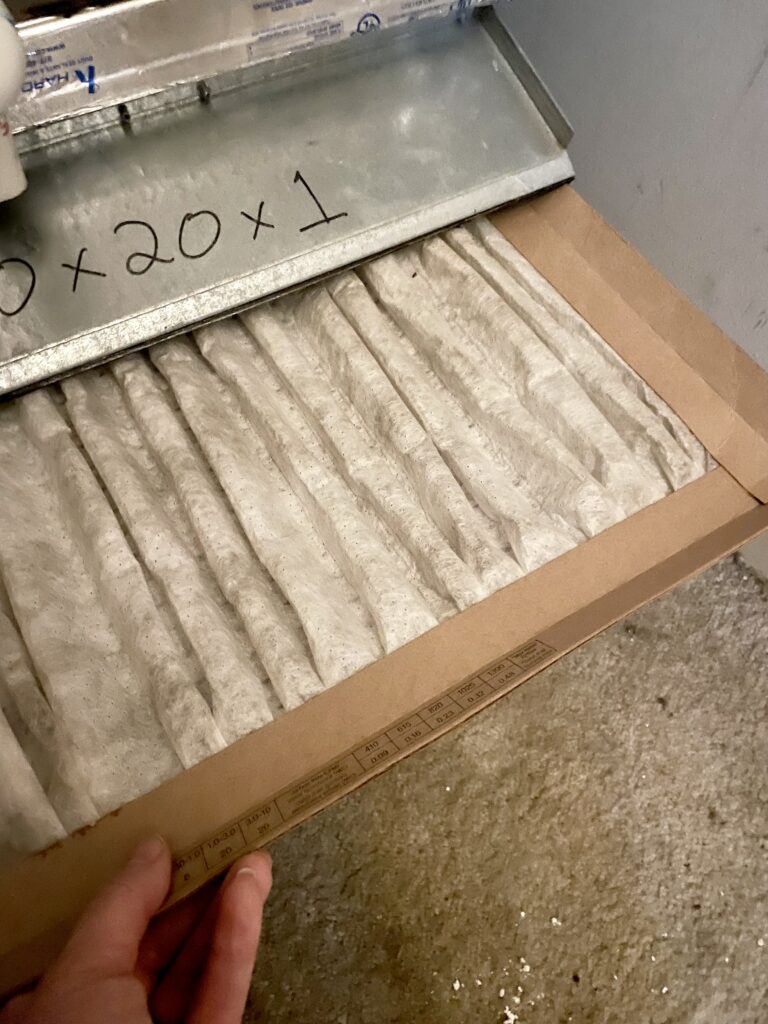
Wipe the edges of your carpeting on a regular basis. Be careful around the tack strip on the edge of the carpeting – it can nick your fingers!
Be sure to use the narrow crevice tool on your vacuum to get into those tight spaces near the walls.
Keep your ducts clean. Your HVAC is responsible for the air movement throughout your home. As the air is forced through your home’s ventilation system, it picks up whatever dirt is in the ducts. Then the system carries that dirty air into the living areas of the home. Experts advise that having ducts cleaned regularly is one of the best ways of preventing soil from building up in your carpet.
Replace your HVAC filter regularly, as recommended by the manufacturer (some last longer than others). The filter traps a good portion of airborne pollutants and keeps these from soiling your carpet.
Address the gaps where air tends to escape. Interior doors should be left open, including leaving the closet door cracked. This allows air to flow easily through the home without travelling through carpet. Another soil zone is where the carpet meets the baseboard. Some contractors use foam sealant there to insulate and stop air loss. It may be necessary to pull the carpet away from the wall to access the area for treatment. However, carpet can be re-installed by a professional carpet stretcher.
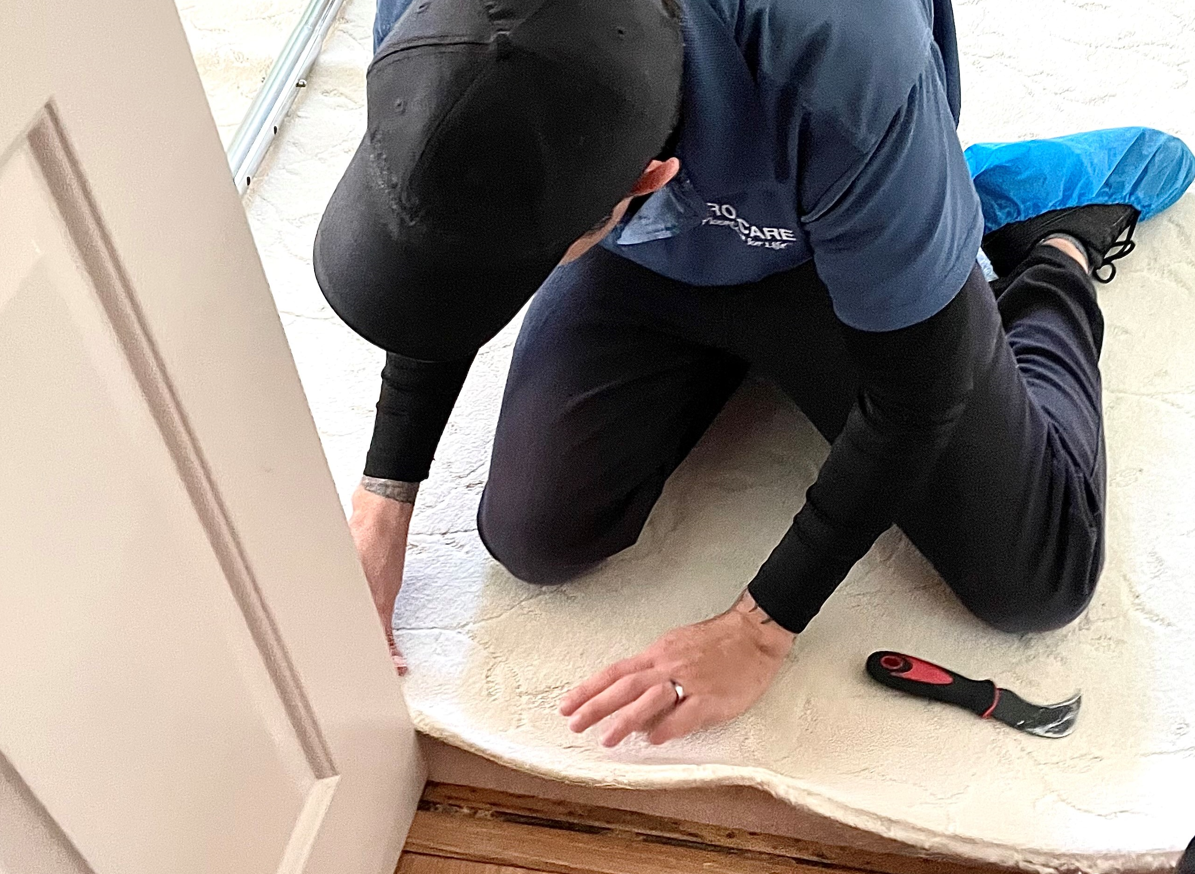
Improve your home’s IAQ – indoor air quality. It is possible to slow filtration soiling and cut down on pollution by revisiting some lifestyle habits. For example, avoiding smoking or burning candles in the home can cut down on ash in the air. Thorough dusting and regular vacuuming help keep your home, and carpets, dust-free. Use that crevice tool along the edges of your carpet and regularly check around your registers and thresholds for signs of build-up.
How To Spot Filtration Soiling
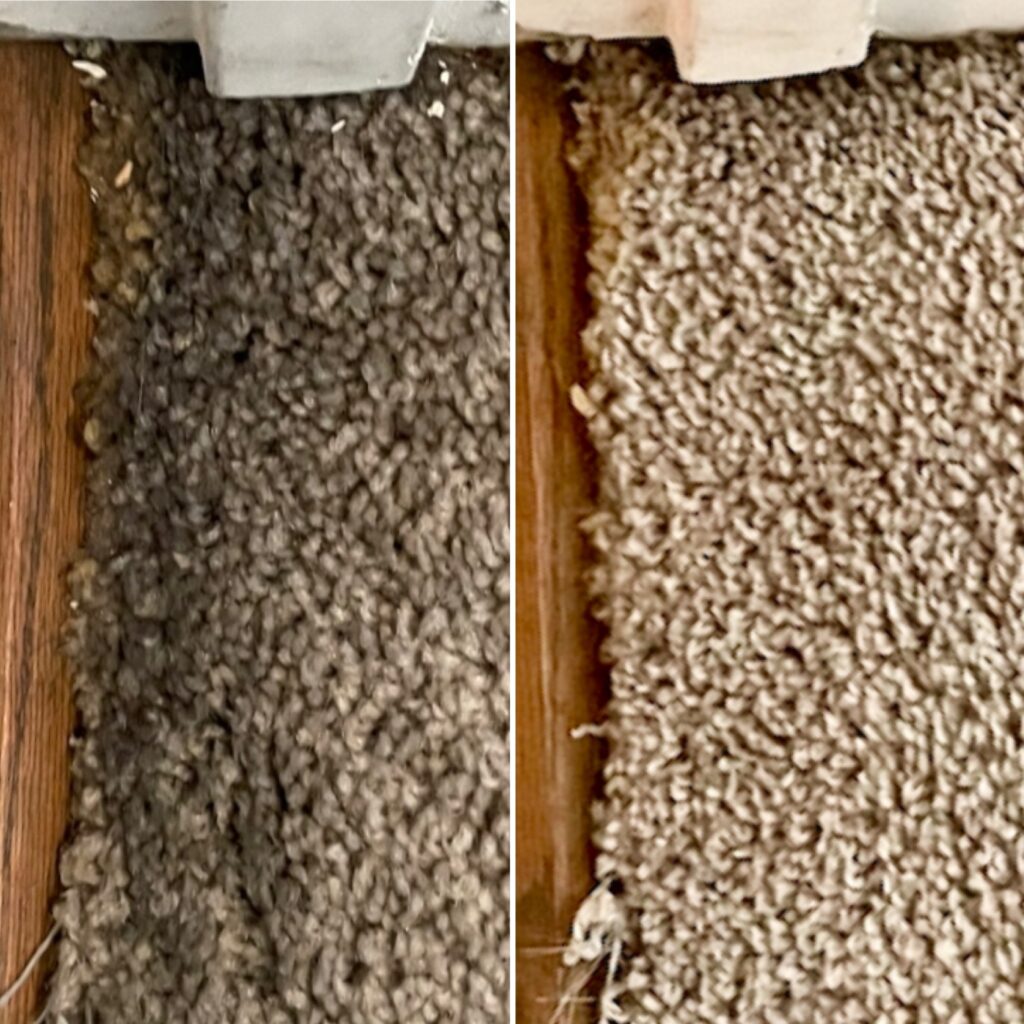
Look for gray or black lines where your walls meet your carpet. Inspect places where carpet runs under doors. Pull up the vent covers in your carpeted rooms to check the area around your registers. Remember too to look closely at the threshold of your closets. If your stairs are carpeted, examine the crease where the risers meet the steps and all along the edges. Don’t be surprised if you spot that tell-tale discoloration. The problem is so common, folks even write in to newspapers for advice.
How To Address Filtration Soiling
A carpet stained by filtration soiling is a challenge to clean. The filtered particles become bonded to the fibers of the carpet. Can the discoloration be minimized? Yes, but this condition is best addressed by professional carpet cleaners. You will want to find a company that specializes in filtration soil removal. Given the difficulty of this work, and the time required to get the best results, this service is generally an investment. With special products and protocols, including hot water extraction, reasonable results may be achieved but it is possible that some discoloration will be left behind.

Home sellers are often concerned about the appearance of their carpet when it goes on the market. When a home’s carpet shows filtration soil damage, some buyers will ask for an allowance to replace the carpet. If the seller does not want to have that conversation, it is worth scheduling a professional cleaning to make the home’s first impression a positive one.
If your home is suffering from filtration soiling, you may ultimately decide to replace your carpet. As you shop for new products, consider a synthetic product. Better yet, choose a medium neutral color rather than anything light or white. Filtration soiling can and will recur if the airflow in a home remains unchanged.
Thankfully, if you keep the preventative pointers in mind, you can enjoy clean carpets and fewer black lines – for years to come.
